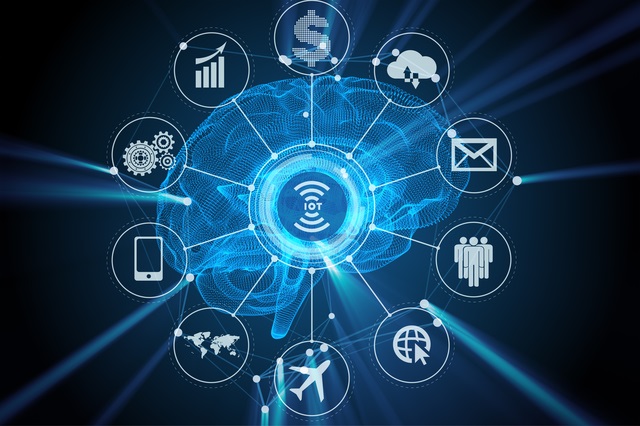<38days>CNN語彙力&読解力UP「過去10年間でもたらしたAIのハイライト6つ<part2>」
こんにちは、 b-styleです。
さて今日も続きをみてきましょう。
ソース記事はこちらです。
ではいきましょう。
How AI came to rule our lives over the last decade

Social networks
When Facebook began in 2004, it focused on connecting people. These days, it's fixated on doing so with artificial intelligence. It's become so core to the company's products that a year ago, Facebook's chief AI scientist, Yann LeCun, told CNN Business that without deep learning the social network would be "dust."
「ソーシャルネットワーク。2004年にFacebookは始まった時、それは人々をつなげることに注力していた。今日、それは人工知能で実行することを軌道修正している。それは1年前には企業製品の中核になっており、Yann LeCun はCNNに、ディープラーニングなしではソーシャルネットワークは"クズ"だ、と語った。」
After years of investment, deep learning now underpins everything from the posts and ads you see on the site to the ways your friends can be automatically tagged in photos. It can even help remove content like hate speech from the social network. It's still got a long way to go, though, particularly when it comes to spotting violence or hate speech online, which is tricky for machines to figure out.And Facebook isn't the only one; it's simply the biggest. Instagram, Twitter, and other social networks rely heavily on AI, too.spot 特定する。
「数年間の投資で、今日のディープラーニングは、あなたがサイト上で見る投稿や広告から友達を写真で自動的にタグづけられることまで全ての土台となっている。それはソーシャルネットワークからヘイトスピーチのようなコンテンツを除去することにも役立っている。そこに至るまで長い道のりがあったが、特に、オンライン上のヘイトスピーチや暴力的なものを特定することに至る時までに、これは機会は把握するにはむずかしかったのです。そして、Facebookはそれだけではない。;それは単純に最も大きなものだ。インスタグラム・ツイッター、そして他のソーシャルネットワークもAIに傾倒している。」
Virtual assistants
Any time you talk to Amazon's Alexa, Apple's Siri, or Google's Assistant, you're having an up-close-and-personal interaction with AI. This is most notable in the ways these helpers understand what you're saying and (hopefully) respond with what you want.The rise of these virtual assistants began in 2011, when Apple released Siri on the iPhone. Google followed with Google Now in 2012 (a newer version, Google Assistant, came out in 2016).But while many consumers took a shine to Apple's and Google's early computerized helpers, they were mostly confined to smartphones. In many ways, it was Amazon's Alexa, introduced in 2014 and embodied by an Internet-connected speaker called the Amazon Echo, that helped the virtual assistant market explode --— and brought AI to many more homes in the process.Consider this: During just the third quarter of 2019, Amazon shipped 10.4 million Alexa-using smart speakers, making up the biggest single chunk (nearly 37%) of the global market for these gadgets, according to data from Canalys.notable 注目に値する
confine 限る / 制限する /とどめる
embody 具現化する
「仮想アシスタント。あなたがAmazonのアレクサやAppleのSiri、google assistantに話すどんな時も、AIでより個人的で近しい興味を把握する。これは、あなたが言ったことやあなたが欲することとともに期待する返答を理解するどんなヘルパーの中において、最も注目に値するものである。2011年に始まったこれらの仮想アシスタントの台頭は、AppleがSiriをiphoneに搭載した時だった。googleは2012年にgoogle nowで続いた。(google assistantというより新しいバージョンは2016年に発表した。)。しかし、多くの消費者がAppleやGoogleの初期のコンピュータ化されたヘルパーに光をあてた一方、それらはほとんどがスマートフォンに制限されていた。多くの方法で、仮想アシスタント市場の拡大に寄与したのは、Amazonエコーと呼ばれるインターネット・コネクト・スピーカーによって具現化された2014年に発表されたAmazonアレクサだった。-そしてその過程でAIはより多くの家庭に持ち込まれた。これを考えてみて。Canalysによれば、ちょうど2019 年の第3四半期に1040万のアレクサを用いたスマートスピーカーを出荷し、これらのガジェットへの国際市場の約37%の最も巨大な単一チャンクを作り上げた。」
Surveillance
As AI has improved, so have its capabilities as a surveillance tool. One of the most controversial of these is facial recognition technology, which identifies people from live or recorded video or still photos, typically by comparing their facial features with those in a database of faces. It's been used in many different settings: at concerts, by police, and at airports, to name a few.Facial recognition systems have come under growing scrutiny, however, due to concerns about privacy and accuracy. In December, for instance, a US government study found extensive racial bias in almost 200 facial recognition algorithms, with racial minorities much more likely to be misidentified than whites.In the US, there are few rules governing how AI in general, and facial recognition in particular, can be deployed. So in 2019, several cities, including San Francisco and Oakland in California and Somerville in Massachusetts, banned city departments (including police) from using the technology.capability 能力 / 手腕 / 伸びる素質 / 将来性to name a few いくつか例をあげるとね。 / 〜など。accuracy 正確さextensive 広い / 広範囲のracial bias 人種的偏見
「監視。AIが向上した時、監視ツールとしての能力がある。これらの議論のうちの一つは顔認識機能で、ライブやビデオ収録、または写真から人々を特定し、通常はデータベースにある顔のデータの中から顔の形を比較している。そこには、空港や警察、コンサートなど異なった多くの場所で使用されている。しかし、顔認証システムは、プライバシーや正確さの心配があってセキュリティが強化され続けている。例えば、12月に、アメリカの研究では、ほぼ200の顔認識アリゴリズムに広範囲な人種的偏見がわかり、白人よりも人種的少数派の方がより誤認される可能性があった。アメリカでは、一般的なところでどのようにAIを使うかは少なからずルールがあって、特に顔認証は配置される。2019年、San Francisco や Oakland in California や Somerville in Massachusettsを含んだ様々な都市で、その技術をつ書くことは警察も含めて、各部署は禁止になった。」
Healthcare
AI is increasingly being used to diagnose and manage all kinds of health issues, from spotting lung cancer to keeping an eye on mental health problems and gastrointestinal issues. Though much of this work is still in the research or early-development stages, there are startups — such as Mindstrong Health, which uses an app to measure moods in patients who are dealing with mental health issues — already trying out AI systems with people.Two startups in the midst of this are Auggi, a gut-health startup building an app to help track gastrointestinal issues, and Seed Health, which sells probiotics and works on applying microbes to human health. In November, they started collecting photos of poop from the general public that they intend to use to make a data set of human fecal images. Auggi wants to use these pictures to make an app that can use computer vision to automatically classify different types of waste that people with chronic gut-related problems — such as irritable bowel syndrome, or IBS — usually have to track manually with pen and paper.diagnose 診断する( 発音はドィグィネス )gastrointestinal 胃腸(部)の( 発音はガストロ ィンタスティナル )probiotics プロバイオテクスmicrobes 微生物fecal 糞便のchronic 慢性の / 持病持ちの / 長期のirritable bowel syndrome 過敏性腸症候群manually 手動で / 手作業で
「健康管理。AIは胃腸問題やメンタルヘルスの問題の診断から肺癌の検査まであらゆる健康問題の症状を管理し、診断することにますます使用されている。これらの稼働の多くは、まだ研究中か開発初期段階だけど、 Mindstrong Health,のような、精神問題に対処している患者の状態を図るためのアプリを使用するスタートアップもある。-すでに人々にAIシステムを導入している。この中間の2つのスタートアップは、胃腸の問題を追跡するアプリを構築する腸の健康スタートアップAuggiと、プロバイオテクスを売買し人間の健康に微生物を適応させる働きをするSeed Healthがある。11月に、彼らは人間の糞画像のデータセットを作るために使用しようとする一般市民から糞の写真を集めはじめた。Auggiは、慢性的に腸の問題を抱える人々の異なった老廃物の種類を自動的に分類するためのコンピュータバージョンを使用できるアプリを作るためにそれらの画像を使用したい。-過敏性腸症候群やIBSのような。彼らは常に手作業でペンと紙で追跡しなければならない。」
Art
Can AI create art? More and more often the answer is yes. Over the last 10 years, AI has been used to make musical compositions, paintings and more that seem very similar to the kinds of things humans come up with (though the jury is still out on whether a machine can actually possess creativity). And sometimes, that art can even be a big money maker.Perhaps the clearest indication that AI-generated art is gaining popularity came in late 2018, when a blurry, Old Masters-esque piece called "Edmond de Belamy" became the first work produced by a machine to be sold at auction.The print was created using a cutting-edge technique known as GANS, which involves two neural networks competing with each other to come up with something new based on a data set. In this case, the data set was a slew of existing paintings, while the new thing was the computerized artwork. GANS is also gaining popularity because it can be used to make deepfakes.composition 構成when a blurry ぼやけた時
「芸術。AIは芸術を創造できるか?ますますその答えはYesだ。過去10年以上、AIはミュージカル構成,絵画、そして人間がやってきたことととても似ているものを作成するのに使われ慣れている(機械が実際創造性を持つかどうか、まだ審査員は出ていないが)。そして時々、そのような芸術は大きなお金を作る者にさえなりうる。AI生成アートが最も明確に人気を博したのはおそらく2018年後半で、"Edmond de Belamy"と呼ばれるぼやけたオールドマスター風の作品は、オークションで売られるための機械によって提案された初めての仕事となった。その絵画は、データセットに基づいて新しい何かを思いつくためにお互い競合する2つのニューラルネットワークを含むGANSとして知られる最先端技術を使用して作成された。この場合、データセットは既存の多数の絵画であり、新しいものはコンピュータ化されたアートネットワークだった。またGANSはディープフェイクを作成することにも慣れているので人気を博している。」
まとめ
いかがだったでしょうか?
今回はAIの仕事が10年でどのように変化をしたのかを紹介しました。
これからAIがどのような活躍を見せるか、楽しみですね。
それではまた。